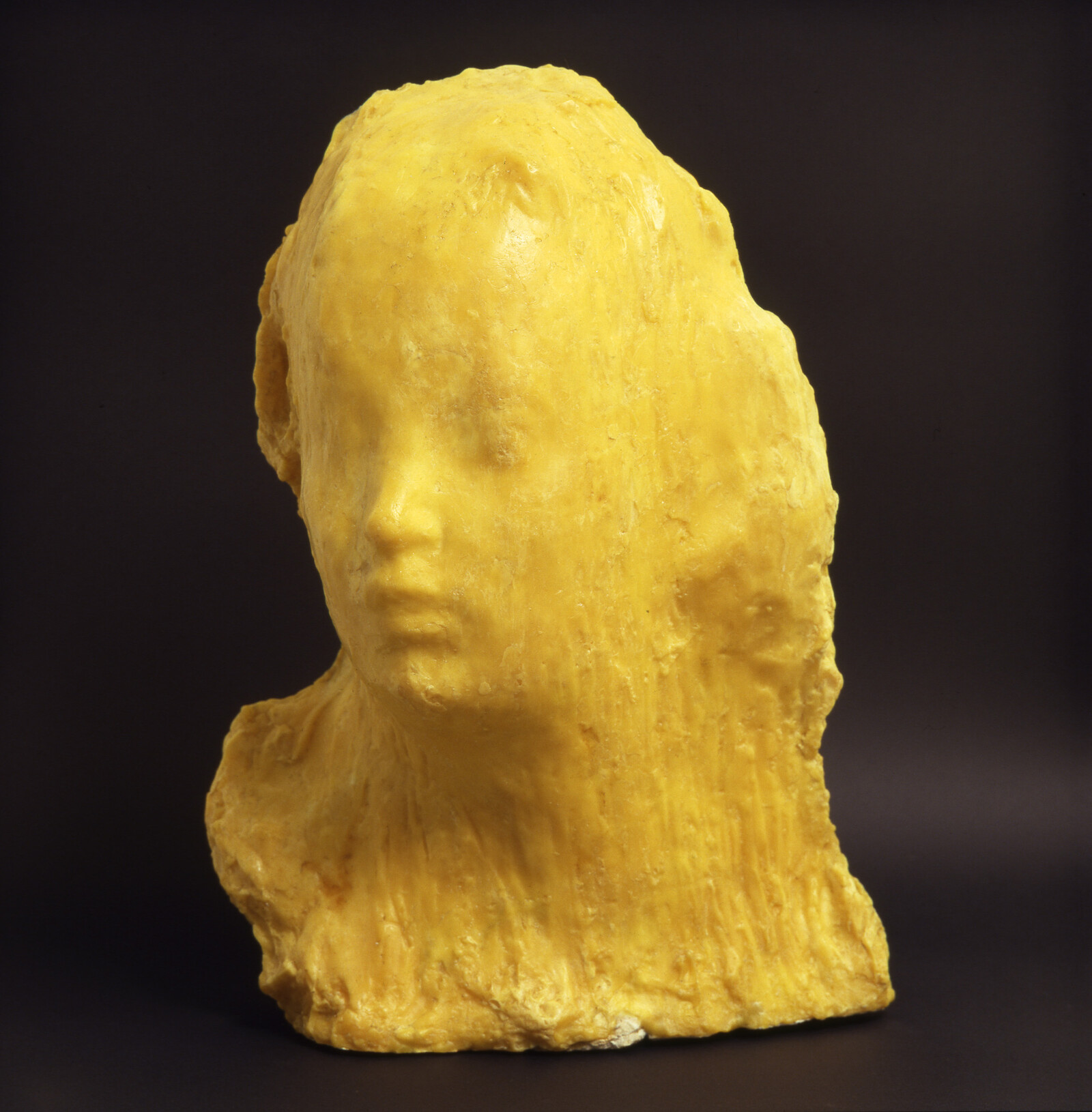Inventing Modern Sculpture
October 18, 2024–February 23, 2025
Museumsplatz 1
1070 Vienna
Austria
Hours: Tuesday–Sunday 10am–6pm,
Wednesday 10am–8pm
press@mumok.at
Artist and craftsman, proto-installation artist, grandmaster of striking stagings, and one of Auguste Rodin’s competitors—Medardo Rosso numbered among the great trailblazers of modernity. To this day, many artists are still deeply fascinated by Rosso, who, for all his affinities for Impressionism, worked at the margins and intersections of methods, media, and materials. At the same time, he is difficult to grasp and, unlike Rodin, is still not widely known among the general public. The comprehensive retrospective aims to present Rosso’s artistic practice in all its facets—ranging from sculptures to photographs and drawings, not to mention texts, exhibition displays, and copies of antiquities. In this respect, it also ties in with the earliest holdings in mumok’s collection.
The exhibition follows in the footsteps of the relation-oriented thinking emblematic of Rosso, who generally showed his art alongside other pieces to set up comparisons. The second part of the show contextualizes his oeuvre for the first time with selected works by other artists from the last 150 years. This sheds light on the ways in which Rosso foreshadowed the major paradigm shifts of twentieth-century art: from the monumental to the anti-monumental; from form to material; from originality and uniqueness to serial (self-)repetition and reiterations; from the final and completed work to the mutable, to process and event; from autonomy to spatial and contextual referencing, and thus finally also to resonance with the surroundings, a reciprocal relationship between subject and object, the seer and the seen, touching and touched.
Responding to the profound crisis in which sculpture was entangled in the late nineteenth century in the face of the fleeting and unsettled modern age, Rosso made a radical attempt to draw sculpture closer to reality and “bring it to life.” The intimate scale, fragility, and openness of his movement-filled, out-of-focus sculptures ultimately also prevailed over the male-connoted heroic tradition of permanence and monumentality historically attributed to sculpture. Rosso saw himself as a citizen of the world—“born in a train”—a stance at odds with the emerging nationalism that surrounded him; he also defied all kinds of boundaries in the motifs he explored, depicting people in everyday life, visibly subject to the passage of time, rather than grand glorious heroic narratives. Through this stance, he turned a spotlight on the radical social upheavals around the turn of the millennium.
In pursuing his creative goals, Rosso worked with bronze, which he cast by hand himself using the old lost-wax method, as well as wax and plaster, “poor” materials that were traditionally only chosen for preliminary studies and were more permeable, malleable, and organic than the stone that was conventionally used. He ultimately developed strategies that set the material and the working process at the center of attention, staging his meticulously lit works in specially designed display cases known as “gabbie” (cages). Rosso created only around forty motifs; rather than finished works, there is a recurrent, potentially endlessly looping return to the moment that has been captured, breathing life into it afresh over and over again. To that end, he worked with casting and photography as technologies of reproduction, calling into question however the commercialized art market’s logic of exploitation by undermining the familiar hierarchies of original and copy, of production and reproduction. At the same time, Rosso aimed through this approach to enter into a relationship of resonance with the world, which he perceived as in a constant state of flux, and to encounter it in ever new and different ways. To cite sculptor Phyllida Barlow, Rosso’s work appears “alarmingly alive,” in particular in an era when it is becoming ever more pressing to rethink the relationship between material bodies and an increasingly technologically networked environment.
Artists in dialog with Medardo Rosso: Giovanni Anselmo, Guillaume Apollinaire, Francis Bacon, Nairy Baghramian, Olga Balema, Phyllida Barlow, Lynda Benglis, Louise Bourgeois, Anton Giulio Bragaglia, Constantin Brâncuși, Eugène Carrière, John Chamberlain, Honoré Daumier, Edgar Degas, Raymond Duchamp-Villon, Luciano Fabro, Loïe Fuller, Isa Genzken, Alberto Giacometti, Robert Gober, David Hammons, Eva Hesse, Jasper Johns, Hans Josephsohn, Ellsworth Kelly, Käthe Kollwitz, Yayoi Kusama, Maria Lassnig, Sherrie Levine, Matthijs Maris, Marisa Merz, Amedeo Modigliani, Robert Morris, Juan Muñoz, Senga Nengudi, Carol Rama, Auguste Rodin, Richard Serra, Edward Steichen, Georges Seurat, Erin Shirreff, Alina Szapocznikow, Paul Thek, Rosemarie Trockel, Hannah Villiger, Andy Warhol, Rebecca Warren, James Welling, Francesca Woodman
Curated by Heike Eipeldauer.
Exhibition design by Florian Pumhösl and Walter Kräutler.
A comprehensive catalog will be published in conjunction with the exhibition. To make Rosso’s artistic practice in all its facets known to a wide audience, the book will present new research and perspectives. Along with an extensive chronology of works and high-quality illustrated plates, the catalog will include contributions by Jo Applin, Birgit Brunk, Heike Eipeldauer, Georges Didi-Huberman, Ines Gebetsroither, Francesco Guzzetti, Lisa Le Feuvre, Megan R. Luke, Esmee Postma, Nina Schallenberg, Francesco Stocchi, and Matthew S. Witkovsky as well as a conversation between Heike Eipeldauer, Florian Pumhösl, and Matthew S. Witkovsky. The book will be published by Verlag der Buchhandlung Walther und Franz König, Cologne.
The exhibition is made possible in close collaboration with the Medardo Rosso Estate and is a cooperation with Kunstmuseum Basel, where it will be on view from March 29 to August 10, 2025.
Contact
Please check our website for regular updates on our program. For further information please contact: press [at] mumok.at



